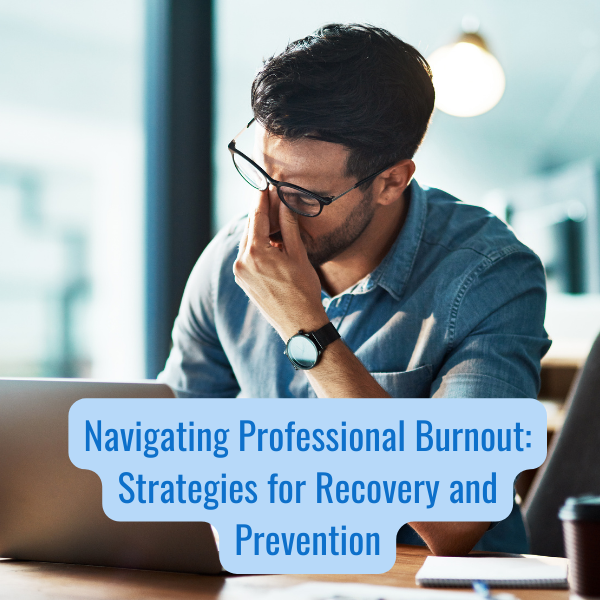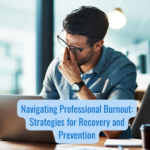Introduction
Professional burnout is a common issue in today’s fast-paced work environment. It can affect anyone, regardless of their profession or level of experience. The good news is that it’s manageable and preventable with the right strategies. In this blog, we’ll explore how to handle professional burnout, focusing on recovery and prevention.
Understanding Professional Burnout
Before we dive into handling burnout, it’s essential to recognize its signs and symptoms. Burnout typically involves physical, emotional, and mental exhaustion, often accompanied by feelings of cynicism, detachment, and a decreased sense of accomplishment. If you find yourself experiencing these symptoms, it’s time to take action.
Strategies for Handling Professional Burnout
1. Self-Assessment
Start by reflecting on your current situation. Identify the factors that may be contributing to your burnout, such as excessive workload, unrealistic expectations, or a lack of work-life balance. Understand that it’s okay to seek help and make changes when necessary.
2. Set Boundaries
Establish clear boundaries between work and personal life. Set specific working hours, and when your workday is over, resist the temptation to check emails or engage in work-related tasks. Your personal time is crucial for recharging.
3. Seek Support
Don’t hesitate to reach out to colleagues, friends, or family members. Discussing your feelings with someone you trust can provide emotional relief. Additionally, consider professional support through counseling or therapy.
4. Take Time Off
If possible, take a break from work to recharge. Even short vacations or extended weekends can significantly alleviate burnout. Use this time to relax, pursue hobbies, and spend quality time with loved ones.
5. Delegate and Prioritize
If you’re overwhelmed with tasks, learn to delegate and prioritize effectively. Focus on the most important and urgent tasks, and be open to asking for assistance when needed. This can lighten your workload and reduce stress.
6. Practice Self-Care
Invest in self-care practices that promote physical and mental well-being. This includes regular exercise, a balanced diet, quality sleep, and mindfulness activities like meditation and yoga.
7. Seek Variety
If your daily tasks have become monotonous, seek variety and challenges within your work. Talk to your supervisor about opportunities for skill development or new projects that spark your interest.
Strategies for Preventing Professional Burnout
1. Manage Workload
Regularly assess your workload and discuss it with your manager if it becomes unmanageable. Ensure that your responsibilities align with your capacity and skills.
2. Time Management
Develop effective time management skills to increase productivity and reduce stress. Tools like the Pomodoro Technique or task management apps can help you stay on track.
3. Professional Development
Continuously invest in your professional growth and skill development. This can boost your confidence and sense of accomplishment in your role.
4. Regular Breaks
Take short breaks throughout the workday to recharge your mind. Even a few minutes away from your desk can increase your overall productivity and focus.
5. Open Communication
Maintain open communication with your supervisor and colleagues. Discuss your workload, challenges, and potential solutions. An open dialogue can lead to more supportive work environments.
6. Identify Early Warning Signs
Learn to recognize the early warning signs of burnout. If you start feeling excessively stressed, detached, or overwhelmed, take action immediately.
Conclusion
Professional burnout is a serious issue, but with the right strategies, it can be managed and, ideally, prevented. Remember that your well-being should always be a priority, and seeking help and making necessary changes are signs of strength, not weakness. By taking proactive steps and nurturing a balanced work-life environment, you can achieve career success without sacrificing your mental and emotional health.







